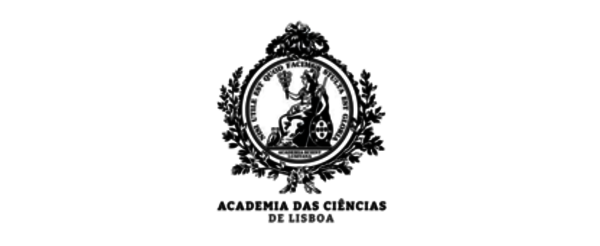News & Academies' activities
Renewable Energy Directive: Interview with Prof. Michael Norton about its impact on the use of primary forest biomass
CW: Together with many scientists, EASAC has argued that primary forest biomass should be excluded from the EU's renewable energy targets.Are you disappointed?
Norton: Well, it’s been quite a political fire fight, from what I understand, between the Parliament’s position, the Council, and the basic science which has been repeatedly emphasized by 800 or more scientists and a sequence of analyses, including ours from EASAC.
The basic science is simple, though. If you cut down trees to burn them, you are making climate change faster and worse. That scientific reality must be seen against the background of the urgency of the climate crisis. We really must start reducing CO2 in the atmosphere urgently. By labelling forest biomass as renewable, EU policies have encouraged a big increase in its use. As a result, CO2 levels in the atmosphere are higher - which is totally counterproductive.
There is this promise that these emissions might be offset later by regrowth of trees. But that takes 20, 30, 50 or 100 years and is no good to us. It is now that we need to get the CO2 levels in the atmosphere down.
The Parliament accepted that reality and agreed that we should stop subsidising this perverse use of forests. But that hit a very solid wall in some Member States, including the country currently holding the EU Presidency, which has become rather unhealthily dependent on biomass to meet their renewable energy targets. So, the science supporting the European Parliament position conflicted with economic and political interests, which is probably why decision-makers ended up with this unfortunate compromise.
There are good points to that compromise, but it is, as you say, rather disappointing on the fundamental question of whether current policy is helping slow down climate change.
CW: What are the good points?
Norton: There are two points which are good. The first one is a reinforcement of the cascade principle, which is basically just common sense.
You regard your forests as a valuable resource. They have lots of natural benefits such as biodiversity, tourism, nature of natural foods. But if you manage forests to produce goods for society or for companies, you should manage them in an efficient way. That means you should try to maximise the value to the economy and the environment of that given area of forest. That's called sustainable forestry management. It was well developed within Europe before we started perverting the market signals by adding big subsidies to bioenergy. In that cascade principle, using wood for timber construction where the carbon in the woods is kept out of the atmosphere for very long periods has the highest priority. It could be hundreds of years in the case of long-lived furniture or long-lived construction. After that you reuse and recycle it. Only when you've really got the most you can from the environment point of view and from the economy point of view, should you start using it for energy. Using wood for energy purposes is the lowest priority in the cascade, just one notch above throwing it away and getting nothing out of it.
So, the cascade principle is a very good principle, but it must be implemented in terms of market signals. Instead, Member States are unfortunately still giving perverse market signals by subsidising the least valuable use, i.e. bioenergy. But if the cascade principle were properly implemented by Member States, that reinforcement would be very valuable.
The second good point is that the compromise text says that we should increasingly use forests as a stock carbon stock in Europe. A tree stocks carbon, thereby keeping it out of the atmosphere. If you burn it, that obviously is incompatible with the first objective. You can't keep carbon in the tree and out of the atmosphere if you burn it. That is a clear logical conflict and there for anyone to see. According to the Directive, the carbon stock should be going up, not down or level. Member States need to manage that balance in a better way to ensure that the carbon stock in Europe is increasing.
In some countries what used to be a growth in the carbon stock turned into a decline in recent years. So, if this second principle is implemented, it should lead to the logical conclusion that we must reduce and finally avoid any climate damaging uses of forest biomass.
CW: How much time do we still have to come to a reasonable implementation of the principles that you've outlined?
Norton: There is no time remaining. Basically, as IPCC said 18 months ago in their first report on the physical side of climate change, we need to reduce global emissions now. We need to halve them by 2030 and we need to have zero emissions by 2050. Even then, we will not meet the 1.5-degree Paris target, but it might get it closer to two degrees.
From a scientific and societal point of view things are very clear: We should stop labelling all biomass as renewable now.
CW: Has EASAC any new project coming up in this area, or will you focus on communicating what has already been done?
Norton: Largely, it will be the latter. Science has not changed since we did our early work in 2016 and then reinforced it in several reports since. We might look into the degree of climate impact in specific case studies. There's still scope for exploring the detail. But the basic reality is that the current system has got use got us into a ridiculous state of play where large amounts of forests in north, particularly North America, in USA and Canada are being felled, converted to pellets, and then either shipped to the UK and Europe or shipped to Japan or Korea.
Our system of subsidies makes that economic, made worse by the rather unfortunate accounting rules which allow importing countries to ignore the carbon in the feedstock they get from another country. I am sorry, if I am repeating myself, but we have this almost Kafkaesque situation where a country is increasing its CO2 emissions by switching to biomass from coal, and at the same time can claim a reduction – just because that imported biomass comes with zero carbon in the books. This emissions laundering works until countries like the USA and Canada start defending their carbon stock rather.
CW: You have recently been heard by the UK Parliament’s Environment Committee. Where is the discussion in the UK? Do you see any improvement?
Norton: Well, there's an increasing realisation that the major producers of electricity from imported biomass are greenwashing when they claim that the switch from coal to biomass leads to an 85% reduction in CO2 emissions – which is completely misleading because it ignores the actual emissions coming out of the stack.
Even if we're burning biomass, there are different types of feedstocks which have different impacts. The original concept of just using waste material was not illogical and may under certain circumstances be beneficial. But that has been like the mask that the industry has used to hide their real economic scale.
Media have many times exposed what really goes on in the forest, clear cuts and all of the forest resource going to pennies, whereas according to the cascade principle, it should only be residues which don't have any potential timber or paper or cardboard value. This disconnect between the claims and reality is also increasingly being recognised.
CW: Thank you for the interview, Prof. Norton.
back to overview
































